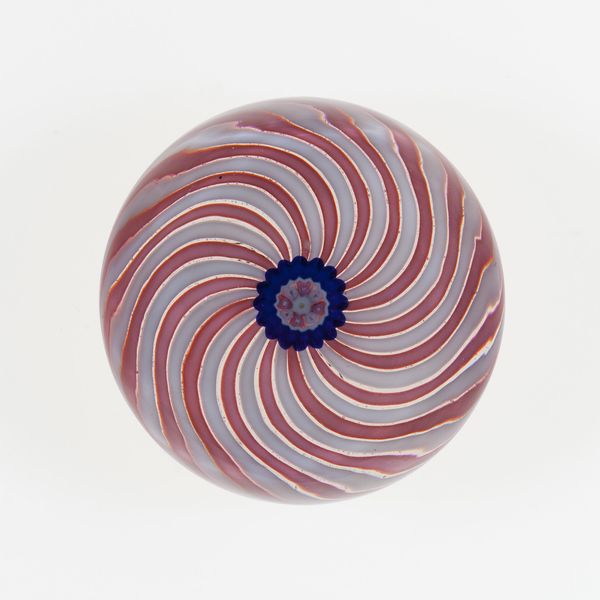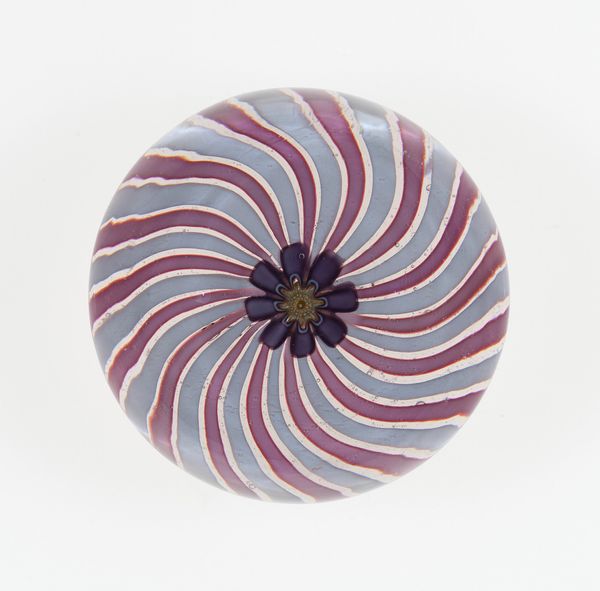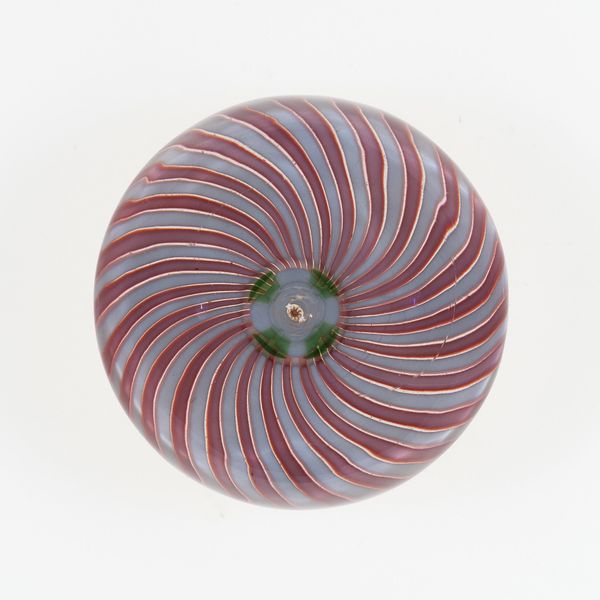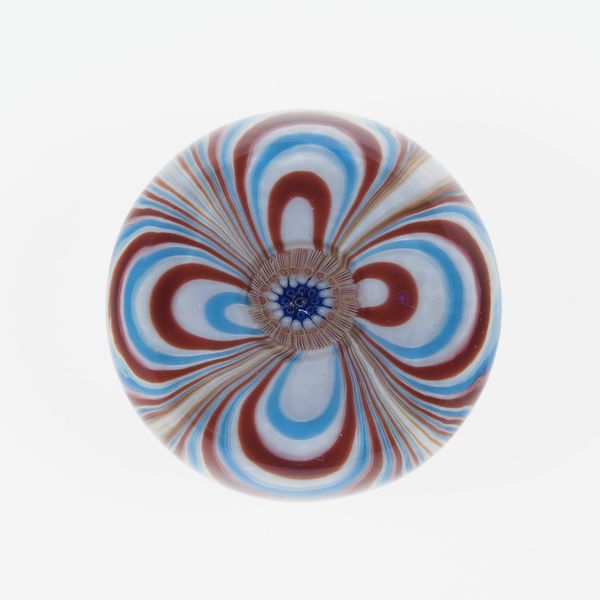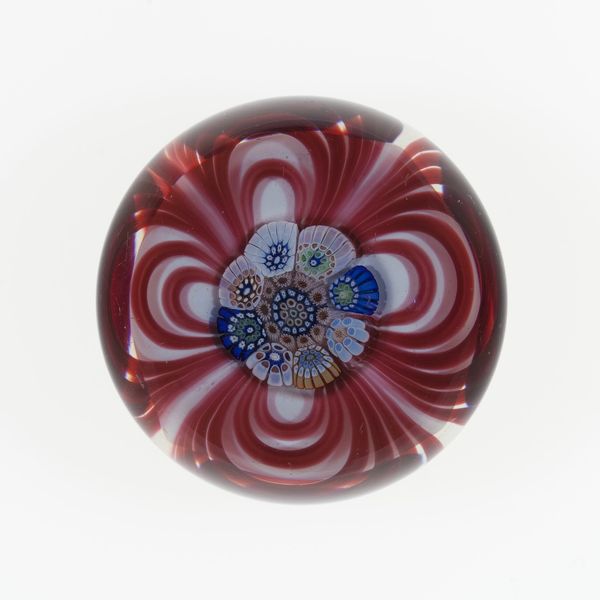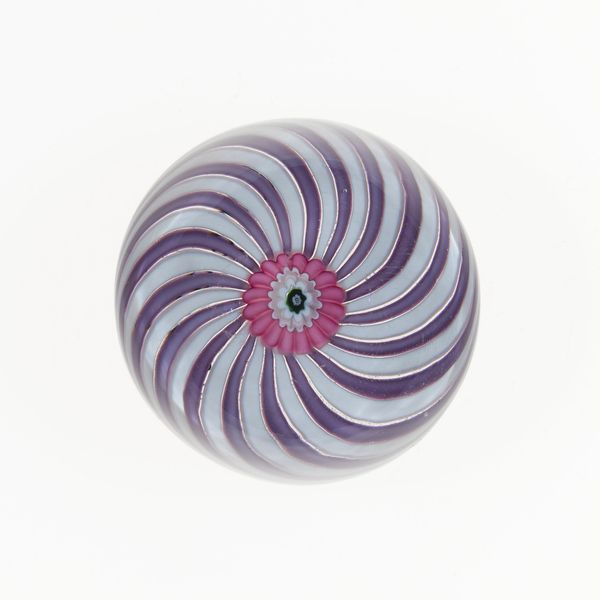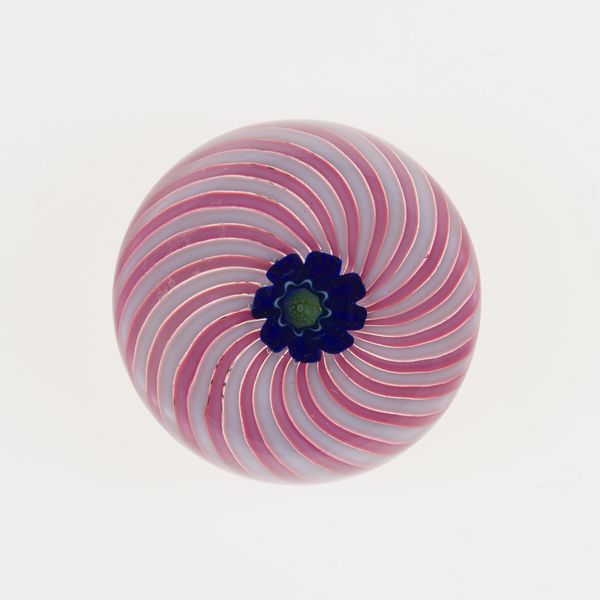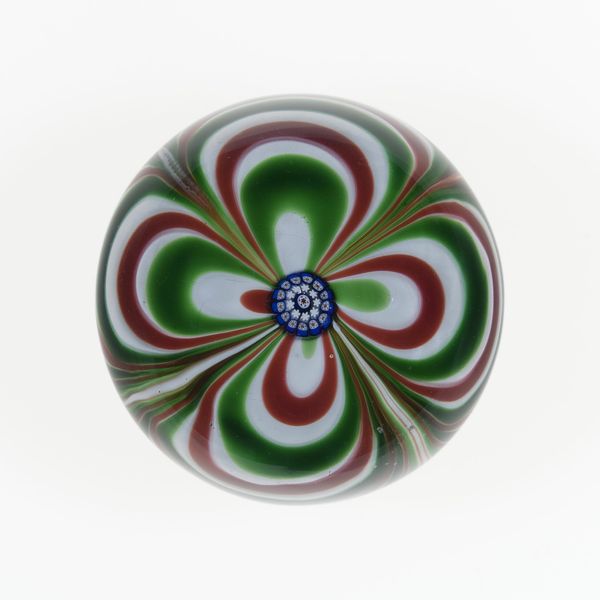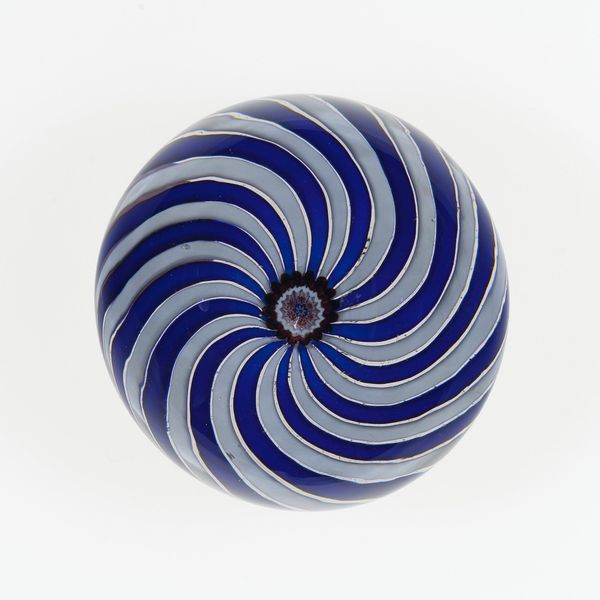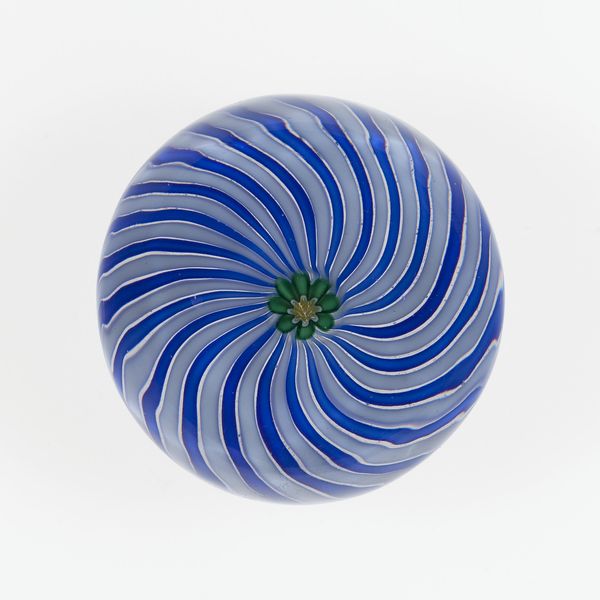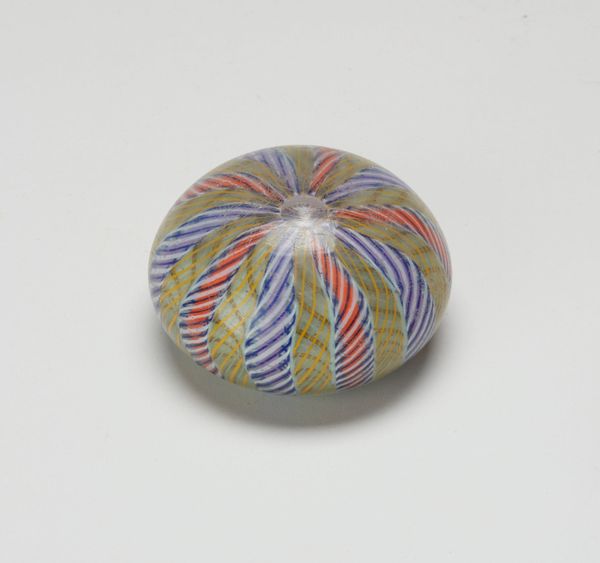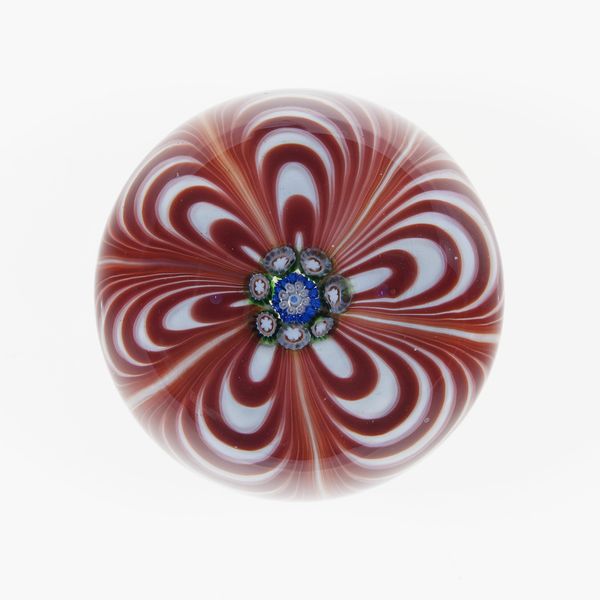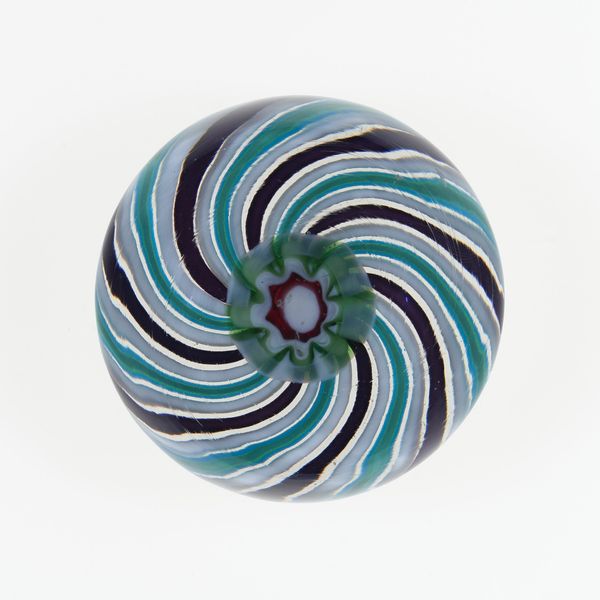
glass, sculpture
#
glass
#
geometric
#
sculpture
#
decorative-art
Dimensions: Diam. 7 cm (2 3/4 in.)
Copyright: Public Domain
Curator: Looking at this object, I immediately see something almost dizzying – the spiral is quite mesmerizing. Editor: This is "Paperweight," created by the Clichy Glasshouse sometime between 1845 and 1860. It resides here at the Art Institute of Chicago. Curator: Clichy. The famous French glasshouse, celebrated for their millefiori. But still, a paperweight…It seems like a demotion for the glassblower’s skill. From chandeliers and tableware, to something that just… sits? Editor: I understand your view, but the accessibility that industrialization afforded allowed objects like this to democratize luxury. What was once exclusive craftsmanship was suddenly in demand across new, emerging bourgeois markets. Curator: Certainly, that opens new consumer markets but does that mean devaluing labor? To produce such a weight with red, silver, and white spiraling around the blue floral detail must have taken great precision. Editor: Absolutely. This paperweight, composed primarily of glass, is as much about its function, that simple utility in the expanding commercial office spaces, as it is about pure decoration. We must think about the context it’s in, to see the rise of glass production at this period, particularly. How did Clichy operate their factory floors, in parallel to new consumption patterns in nineteenth century Paris? Curator: The repetition in production, however intricate, does seem to lessen the artistic value when placed next to older studio pieces with unique details that cannot be exactly replicated. Yet I concede to consider a worker reproducing, shaping the rods, with as much artistry to make them a decorative item, now mass produced… interesting tensions emerge from industrial practices. Editor: Precisely! That tension—between handcrafted beauty and manufactured object—became a defining characteristic of the decorative arts in the Victorian era. Seeing objects of design as representative and affected by that culture is so interesting to me. Curator: Examining this piece more closely, focusing on those intersections, might help me consider not what’s diminished, but what is amplified as value transfers from maker to consumer. Editor: Exactly. Consider not just its function as an object on a desk, but its place within wider structures of economy and desire, the birth of design, or, more intimately, our own relationship to our workspace, in constant transition since Clichy's first weight sat on someone's papers.
Comments
No comments
Be the first to comment and join the conversation on the ultimate creative platform.
